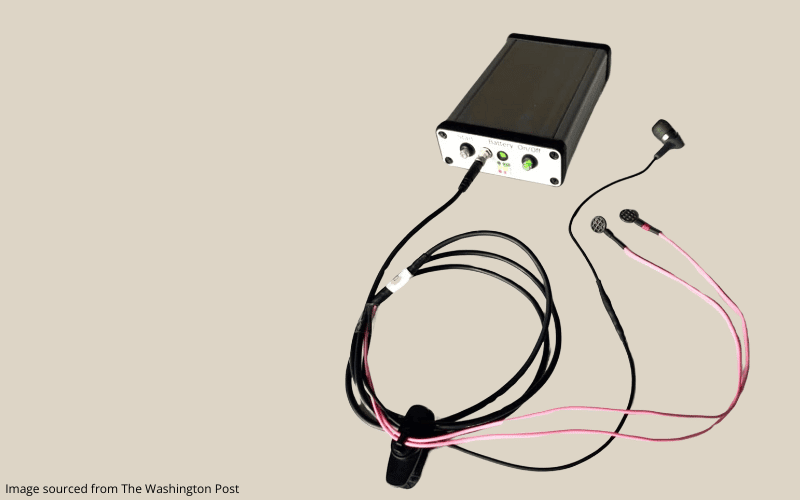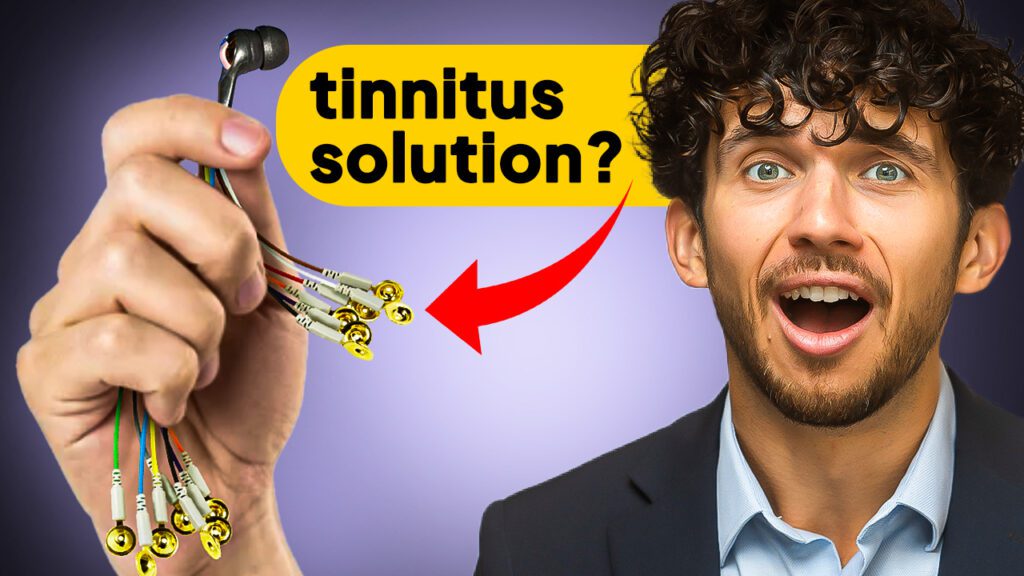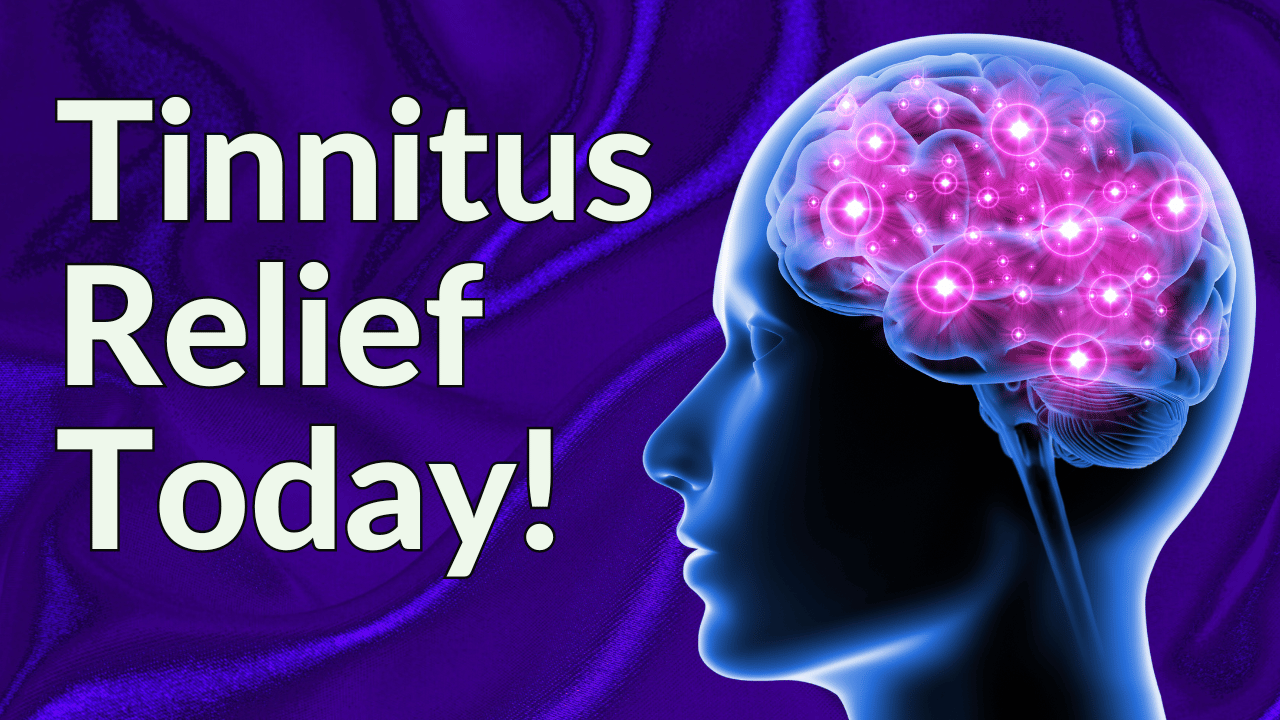Tinnitus is a common condition, believed to affect as many as 700 million people worldwide. Despite its prevalence, the condition remains an elusive one, without a single, definitive cure or even a treatment method that is used across the board. As a result, researchers have continually sought out different potential interventions for the condition, to help alleviate symptoms and the fallout that can accompany symptoms. Is bimodal stimulation the answer tinnitus patients have been looking for?
"Treble Health helped me turn down the sound of my tinnitus. Now I can breathe, and get on with my life!"


"Treble Health helped me turn down the sound of my tinnitus. Now I can breathe, and get on with my life!"
– Elisa
Book a free consultation to learn which Treble Health solution is right for you. Join Elisa and thousands more who have found lasting tinnitus relief.
First, let’s take a closer look at Dr. Susan Shore, the researcher behind a promising new bimodal device, and how the device intervenes in and ultimately improves symptoms of tinnitus.
Dr. Susan Shore: Who Is She?
Dr. Shore is a renowned tinnitus researcher. Although there are plenty of studies that have been conducted regarding tinnitus, and there are innumerable interventions that have been evaluated for tinnitus treatment, the Michigan Tinnitus Device has garnered a significant level of interest specifically because Dr. Shore is at the helm and she is a long-time and trusted researcher of tinnitus, including its roots and its most effective interventions.
Bimodal Stimulation: What Is It?
Bimodal stimulation is a type of intervention that takes two different sensory inputs and combines them, in order to activate the auditory and somatosensory pathways, directly impacting the effects of somatic tinnitus. Somatic tinnitus, a form of tinnitus that is impacted by different body movements and postures, is thought to have its roots in injuries, nerve damage, and other factors impacting both the auditory and somatosensory systems. Bimodal stimulation seeks to directly address this concern to reduce the brain’s response to the sounds of tinnitus.



During a session, the device is used to deliver small sounds to the ear, while small currents are also delivered to the cheek. While some minor irritation has occurred to skin, this intervention has shown itself to be effective in more than half of cases, effectively integrating the sounds of tinnitus in the brain, to reduce the nervous system activation that occurs in response to ringing in the ears.
Bimodal stimulation is being tested specifically for somatic tinnitus, as it is not yet certain whether it can help other forms of tinnitus that are not in any way impacted by body movements and postures. The ultimate goal of bimodal stimulation is not necessarily to resolve tinnitus symptoms altogether, but instead to reduce the severity of symptoms and reduce attenuation to phantom sounds. Bimodal stimulation is not considered a cure or a management technique; instead, it is considered an effective treatment device.
Why Is the Michigan Tinnitus Device Promising?
In a study evaluating 99 individuals with tinnitus, 53% reported significant changes to tinnitus symptoms, which is promising for a cohort of people experiencing somatic tinnitus symptoms. With roots in issues affecting the jaw and neck (including TMJ dysfunction), the study focused entirely on somatic tinnitus, and utilized a rigorous process relying on a double-blind, crossover design. Although more and larger research studies are needed, preliminary research shows that the device is potentially promising for people experiencing symptoms of somatic tinnitus.
Also referred to as the Susan Shore device, this device is expected to be submitted for FDA approval for use in 2024, though it can be expected to take around 12-18 months for approval, if the FDA does award it an approval for use as a tinnitus treatment. This means that, while it is a promising device, it may not be available for some time yet.
Potential Drawbacks and Ongoing Research
Although the Michigan Tinnitus Device is promising, there are some potential drawbacks, the most significant being its narrow scope of use for tinnitus as a whole. Because the device is designed specifically to address somatic tinnitus, it is not a useful intervention for people with other forms of the condition, making existing tinnitus treatment options still necessary for a large portion of the population currently living with tinnitus. For those with a somatic tinnitus diagnosis, the device may be useful, but people who do not have somatic tinnitus are unlikely to experience relief from their symptoms.
The other drawback is the need for ongoing research; the study, while rigorous, was still quite small in its design, and ongoing, large-scale research is typically necessary to determine the true efficacy of a product, especially regarding other forms of tinnitus. There are some forms of tinnitus (Meneire’s Disease related tinnitus, hearing loss instigated tinnitus, and acoustic neuroma-derived tinnitus, for instance) that will not respond to this form of treatment, and research will be needed to find different treatment avenues for these forms of the condition.
Finally, a potential drawback is the manner in which the therapy is expected to be delivered; while some interventions currently offered allow tinnitus patients to engage tinnitus treatment at home, the nature of bimodal stimulation means that treatment would likely take place in a clinical setting, with an audiologist or ENT doctor, which can limit availability for some. An uncertain future regarding cost and insurance coverage can also be potential drawbacks, as the intervention may not be accessible to people without insurance or access to funds for intervention.
Effective Tinnitus Treatment Options Currently in Use



There are plenty of tinnitus treatment options currently in use with approvals in place and evidence of efficacy similarly in place. These options can be used to address tinnitus now, without waiting for FDA approval, in order to deliver relief from some of the more significant impacts tinnitus can have on human health and well-being.
Tinnitus Retraining Therapy
Tinnitus Retraining Therapy (TRT) is an intervention that relies on education, counseling, and sound therapy in a combined modality. Delivered by a hearing health professional like an audiologist, TRT has a history of effective use in addressing tinnitus, and many people with tinnitus experience relief from symptoms using TRT.
Hearing Aids
Because tinnitus is frequently accompanied by hearing loss, or a comorbid condition to hearing loss and related disorders, hearing aids can be useful to help address the root cause of tinnitus (hearing loss), and provide some relief from symptoms.
Sound Therapy
Sound therapy is an intervention that uses sounds to limit the effects tinnitus has on the auditory system. Delivered via a hearing aid, or a tabletop sound machine, sound therapy can be a highly effective therapy to limit the effects tinnitus has on an individual’s life, including helping with sleep, concentration, and daily function.
Cognitive Behavioral Therapy
Cognitive Behavioral Therapy (CBT) is a form of intervention that addresses tinnitus from a few angles. Mental health is often negatively impacted by the onset of tinnitus, and people with the condition may be more likely to report anxiety and depression. CBT can help address the declining mental health associated with tinnitus, and it can also help tinnitus patients develop healthy coping mechanisms to deal with the frustration and distress that tinnitus can cause.
It can be tempting to wait for a new therapy device to address your tinnitus–especially one as promising as a device from a long-time, well-respected tinnitus researcher. With an uncertain timeline in place, however, people with all forms of tinnitus (somatic and otherwise) should pursue existing types of intervention to prevent unnecessary struggles and suffering that can come along with tinnitus, including mental health declines and damages to hearing. An audiologist can effectively evaluate hearing and tinnitus symptoms to determine the best course of treatment to limit or eliminate your symptoms as soon as possible.
Effective Tinnitus Treatment With Treble Health
Understanding the complexities of tinnitus can be daunting, but you don’t have to navigate it alone. At Treble Health, our team of audiologists brings together decades of expertise from leading clinics nationwide, having supported thousands of individuals on their journey to reclaiming their lives from tinnitus.
Regardless of the cause or specifics of your condition, our team of audiologists are here to guide you through your journey to tinnitus relief. If you have any questions, we encourage you to schedule a complimentary telehealth consultation with an audiologist on our team. This free 20-minute Zoom call offers you a direct line to our specialists, allowing you to ask any questions and explore treatment options tailored to your unique situation, all with no obligation. Don’t let tinnitus dictate your life — reach out to Treble Health and discover how we can help you regain a life without bothersome tinnitus.
Next Step: Book Free Consultation
- 75% of patients reduced their tinnitus within three months after following our recommendations.
- "I feel like Treble Health literally gave me my life back." - Randy S. (verified customer)
- Join thousands of people who have reduced their tinnitus after scheduling a free consultation.




















